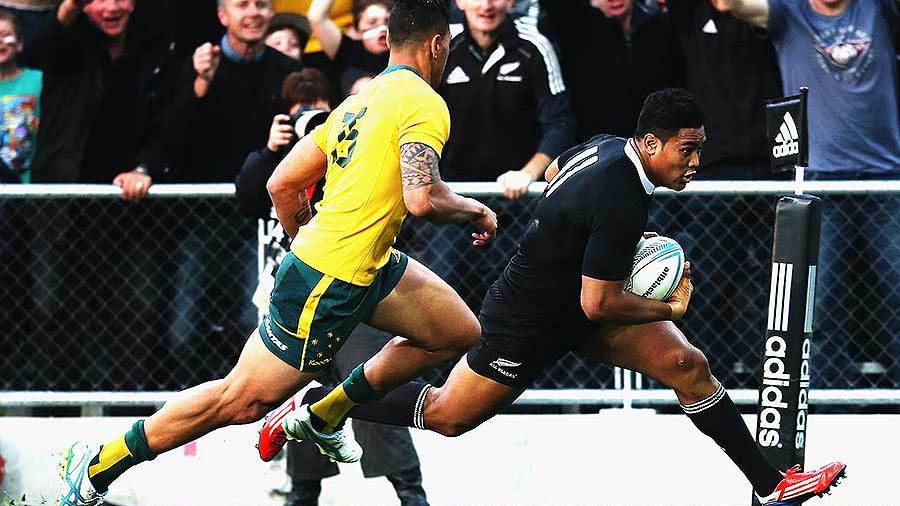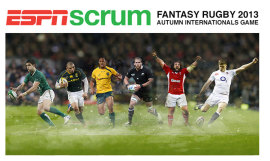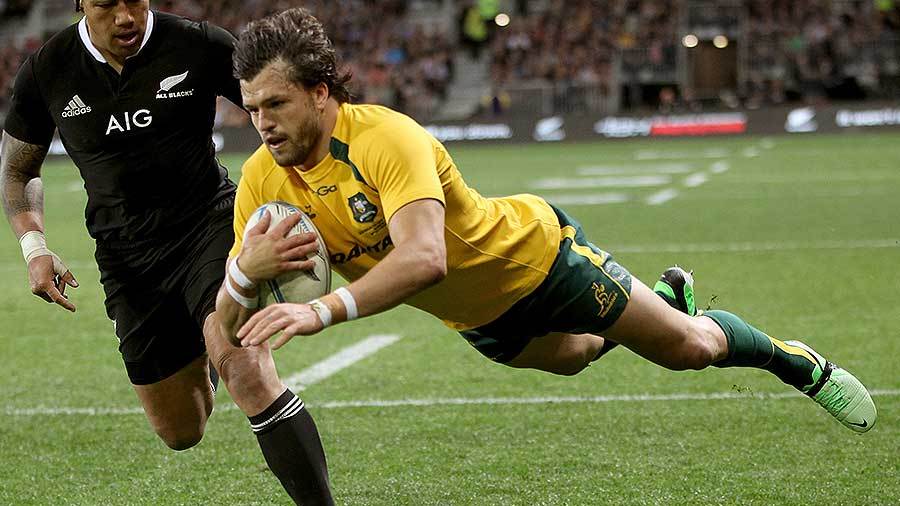|
Australia
Greg Growden sets KPIs for Wallabies
Greg Growden
October 30, 2013

Black and white: rugby isn't rocket science, and we'll analyse the Wallabies against simple KPIs © Getty Images
Enlarge

How shall we measure the success of the Wallabies on tour?
© Getty Images
Enlarge
It is customary before Wallabies end-of-season tours of the northern hemisphere for team officials to make silly statements; the usual line revolves around how it is imperative, near non-negotiable, for the team to win every game. But this only puts unnecessary extra pressure on a side, which these days does not have the luxury of midweek tour matches to establish combinations, eradicate problems, improve fitness and give everyone a fair chance of making the Test team. Generally, high hopes have not been matched by the results. It happened again before this year's tour, with Australian Rugby Union officials going on about how it would be fantastic if the team achieved the Grand Slam through November. It would be fantastic; whether it is feasible is another matter. This isn't exactly the greatest Australia rugby team to leave these shores, and the task ahead is formidable - starting against England at Twickenham on Saturday, followed by Italy, Ireland, Scotland and Wales. Expectations should not be unrealistic. Instead, this tour must be treated as one on which Australian rugby can discover whether the Wallabies have made actual improvement under the Ewen McKenzie regime, or if they have stagnated and remain well behind the leading two powers - New Zealand and South Africa. This is the tour on which Australia can show whether they are rightfully slotted by the International Rugby Board at a measly No.4 in the world, or are better - maybe worse.
Growden's Manifesto to save Australian Rugby
© ESPNscrum with Getty Images
We have established five Key Performance Indicators by which we will measure the success or otherwise of the tour; we will analyse and rate the Wallabies' performances against these KPIs after each Test of the tour.
1. ResultsFive out of five Test victories will keep the ARU happy, but let's take off the spacesuits and return to the real world. The Wallabies are a team in transition, and they remain disjointed and missing major working parts despite some recent encouraging moments. They are also without numerous key players through injury. The Wallabies arrived in London less than buoyant despite the advantage of having played Test football recently, compared with their northern opponents who are just coming into their international season; even the captain, James Horwill, after a long bout of ill form, has to prove he is worthy of his elevated position. A pass mark would be winning four out of five Tests. Three out of five is probably the most likely scenario, but that will mean this team is just treading water.

How far has the Wallabies scrum come under the new engagement laws? © Getty Images
Enlarge
2. ScrumAustralia's revival as a world rugby power ultimately depends on their scrum. The Wallabies forwards try to cloud the issue by arguing they are unfair maligned by referees and rugby critics, but the harsh truth is that the Australian pack is vastly inferior to most, and too inconsistent to command respect. Until the Wallabies can repeatedly match other international packs, and not perform now and again, they will remain an erratic attacking team forced to work on rushed, messy possession. This tour is important because they will confront several good northern packs that are well attuned to the theatrics and mechanics of scrummaging. The Wallabies say they have an advantage, as they are accustomed to the new engagement laws, so the pack must make full use of that experience - and actually show they are men and not mice. There are also no excuses this time around as the team will be together for well over a month. That's more than enough time to eradicate their most serious team problem.

The Wallabies have conceded tries too easily in 2013
© Getty Images
Enlarge
3. DefenceWho exactly is the team's defensive coach? That's the big question surrounding this Wallabies team. And the mystery man is obviously keeping a low profile because the side's defensive capabilities have dropped way off this season. Defence once was the team's strong point. Not any more - as shown by the leaking of 28 tries so far this season; lone gone are the days when the watertight Wallabies went through a Rugby World Cup tournament conceding only one try. Most infuriating this year has been the sight of players constantly caught out of position; or if in the right position opting for feeble slap-and-tickle attempts at downing their opponent; or just missing altogether. Their defensive alignment is more often than not confounding. This area will have to improve dramatically on the tour; otherwise a Grand Slam could turn into a Grand Dunk.
ESPNScrum Fantasy
Enter the Autumn Internationals Fantasy Game © Scrum.com
4. CombinationsThe tour is imperative in working out what is the best Australian midfield attacking combination. With Quade Cooper now likely to retain the No.10 jumper, we ask if Matt Toomua or Christian Leali'ifano is best suited to be his inside centre. Toomua looked good in that position in Dunedin and this is the tour where he has the opportunity to own the No.12 jumper. Israel Folau has developed a dangerous attacking combination with Cooper, realising the value of running off his No.10's shoulder, and that could be a major weapon through November. After several dreadful Tests, outside centre Tevita Kuridrani improved his act in Dunedin (he had to, otherwise he would have been on his way to rugby oblivion) and now he must show whether he properly deserves the No.13 jersey or is just a catalyst for Adam Ashley-Cooper being wasted on the wing. Also the tour should give a better picture as to whether Folau's best spot is at fullback; his attacking work is fine, but he looks all at sea in certain defensive situations. Hopefully by the end of the tour, McKenzie will also have a better idea where best to use Bernard Foley.

Is Adam Ashley-Cooper wasted on the wing? © Getty Images
Enlarge
5. Attacking mojoThere were encouraging signs against Argentina in Rosario and the All Blacks in Dunedin, but it must continue. Australian crowds will return to the Test arena only if the Wallabies play consistently with vim, flair and unpredictability. The northern hemisphere teams will undoubtedly try to play with more width, and the Wallabies have to respond. Here is the chance for Cooper, Folau and co to show they know the way forward, and can go the extra step in 2014 when the artillery returns. © ESPN Sports Media Ltd Join the conversation with Greg on Twitter @GregGrowden
|
Live Sports
Communication error please reload the page.
-
Football
-
Cricket
-
Rugby
-
- Days
- Hrs
- Mins
- Secs
F1 - Abu Dhabi GP
Abu Dhabi Grand Prix December 11-131. Max Verstappen ()
2. Valtteri Bottas (Mercedes)
3. Lewis Hamilton (Mercedes)
4. Alexander Albon ()
5. Lando Norris ()
6. Carlos Sainz Jr ()
-
ESPNOtherLive >>
Boxing - Nelson v Wilson; Simmons v Dickinson; Joshua v Gavern (Metro Radio Arena, Newcastle)
Golf - Houston Open
Snooker - China Open
Tennis - Miami Open

